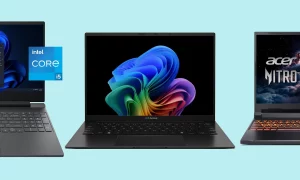Get the Most out of Your Computer

2020 has done nothing if not demonstrate to us how much we all depend on our various devices for work and human connection. Unfortunately, though, the volatile job market also means that maybe we can’t rush out to upgrade to the newest and shiniest computers whenever we want. Maybe you’ve got a trusty old workhorse that gets you through the day, but the one thing you need more of is space on your harddrive. Here’s some ideas for salvaging computer storage until you feel confident making that upgrade in a few months.
External Hard Drive
Maybe you’re worried about the security of the data you work with. In that case, a physical hard drive can be a good way to save space on your device. They can be readily encrypted with free software to make them extra secure, so that only the password-holder (theoretically, you) can access them.
Cloud Storage
If you’re like us and feel like always reaching for that external harddrive when you need to work sounds like a pain, there are lots of great cloud options available. OneDrive comes with the Microsoft Office Suite, so if you’ve got that, you’ve also got access to 5 GB of free cloud storage for all your files. Downside: all the Office products try to force you to save every file in OneDrive, which can quickly eat up your storage. However, if you don’t mind that, like the Office interface, and are willing to pay around $70 a year, you can also get access to 1 TB of storage.
Google Drive is a similar, but more widely available service, since you just have to have a Gmail account to access it, rather than an Office subscription. Also, since Google’s own document-creating software is fairly advanced at this point, if you’re mostly working in word-processing, spreadsheets, and slideshows, you may be able to use Google for all your document creation and storage needs, instead of switching between different suites of software. Up to 15 GB of storage space is free for private users, and 30 GB for Google Suite users, and it’s easy and generally cost-effective to upgrade for more space as needed. An additional perk of Google Drive are the two apps that allow you to access its files directly from your computer, instead of in your web browser. Back up and Sync allows you to store your files on your computer and on the web, while File Stream allows you to store them on the web but sync them to your computer as you need them.
iCloud is Apple’s version of Google Drive, and works very similarly in that it comes with its own document creation suite (Pages, Numbers, and Keynote). Its user interface is also identical to iOS, which is ideal for people already familiar with Apple products. However, free storage space is a bit limited at only 5 GB, with upgrades to 50GB, 200GB, or 2TB coming at different price points.
Of course, we can’t forget the cloud storage OG with Dropbox. Unfortunately, storage space for the free version is now very limited (2GB), but the paid version at around $10/month brings 1TB, plus file-editing capabilities, offline access, and automatic backup of photos and videos.
Free Your Device
As you can see, there are a multitude of options available to help you reclaim your computer’s storage. If you’re clever, you can even use multiple storage solutions for different file types to maximize your free options, or if convenience is what makes you happy, you can pay low monthly fees between $1 and $10, to put every file you own in the cloud – safe, secure, easy to access. That’s a lot better than shelling out a grand right now to get a bigger hard drive in a new computer!
And if you notice any bugs pop up once you’ve cleaned out your storage, don’t hesitate to contact us about our easy refresh service to restore your computer to that fresh-out-of-the-box look and performance.










